The 1965 Shelby Cobra Is Driving at Its Brightest
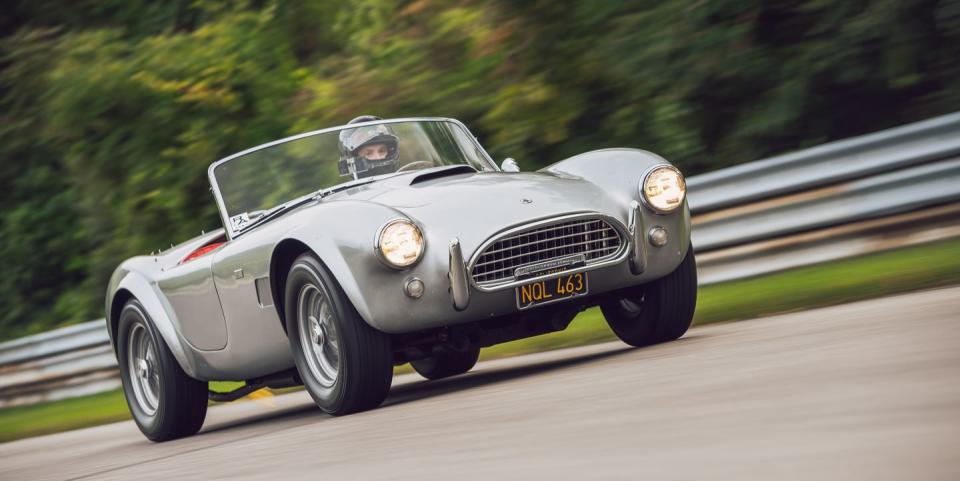
If you grew up with dirt between your toes and even a passing interest in cars, you know the Shelby Cobra. You know where it came from, who built it, and what it accomplished. How a fast-talking Texan conned and swindled his way toward the realization of a car that would change the course of racing history. An American dream written in aluminum, cast iron, and leaded gasoline. For those of us raised in places where a 911 is an exotic, where meteorites are more common than anything from Modena, a 1965 Shelby Cobra is peak sports car. But knowing all that can’t prepare you for how good it is to drive.
This is an excerpt from our recent article, The Search For the Greatest Sports Car of All Time, where we rounded up eight of the most important enthusiast cars ever made, track-tested them at Lime Rock Park, and declared one ultimate winner. Enjoy this chapter on the Shelby Cobra 289, but be sure to read the entire eight-part story.
Somehow, the decades of familiarity weren’t enough. A lifetime of seeing die-cast recreations and gaudy wide-body kits did not prepare me for how gorgeous a narrow 289 car can be. With thin wire wheels and no glaring chrome side pipes or roll bar, it’s easy to see what drew Carroll Shelby to the AC Ace to begin with. It possesses the bare minimum required to be a car. No top, no door handles. One side mirror. A thin windshield frame. The thing looks delicate, artful. Handsome in a way no steroid-ridden recreation can match. The fact that this car, CSX2230, bears the marks of being driven daily for more than 20 years only adds to its charm. It comes across as a thing to be relished.
We think we know this recipe: Big engine plus little car equals a fast but vicious machine. A nose-heavy, tail-happy monster eager to send you pirouetting if you don’t mind your manners. Maybe that’s because our world is full of those bad Cobras, too stiff or powerful to be anything but a nightmare. That’s where my mind was when owner Colin Comer walked me through ingress and egress. The rules are simple: Make sure the door doesn’t crease the front fender, don’t put your hands on anything aluminum, don’t yank on the wheel as you exit.
“Anything else?”
“Turn the key and drive it,” Comer said. “It’s a car.”
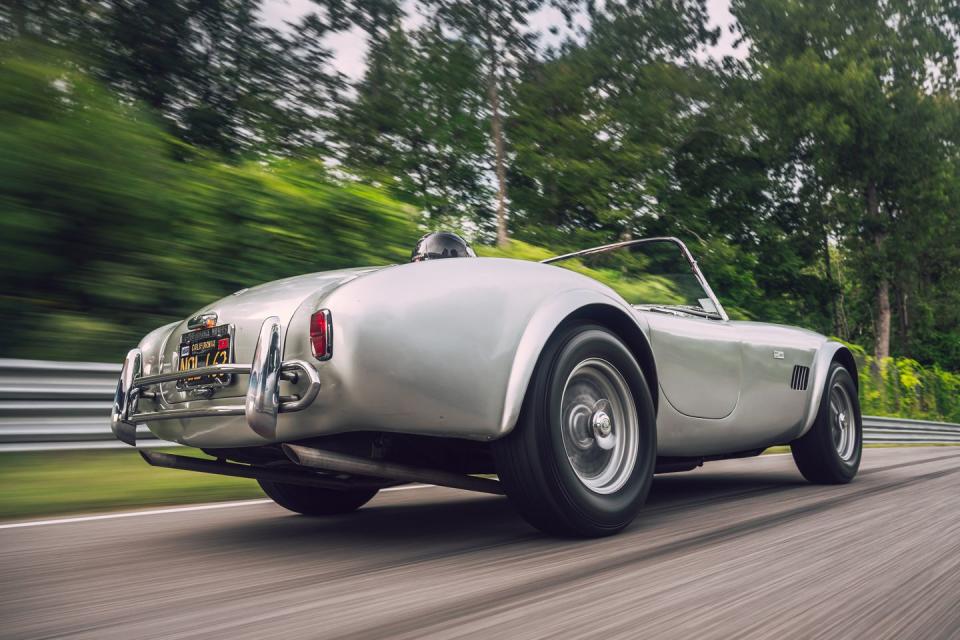
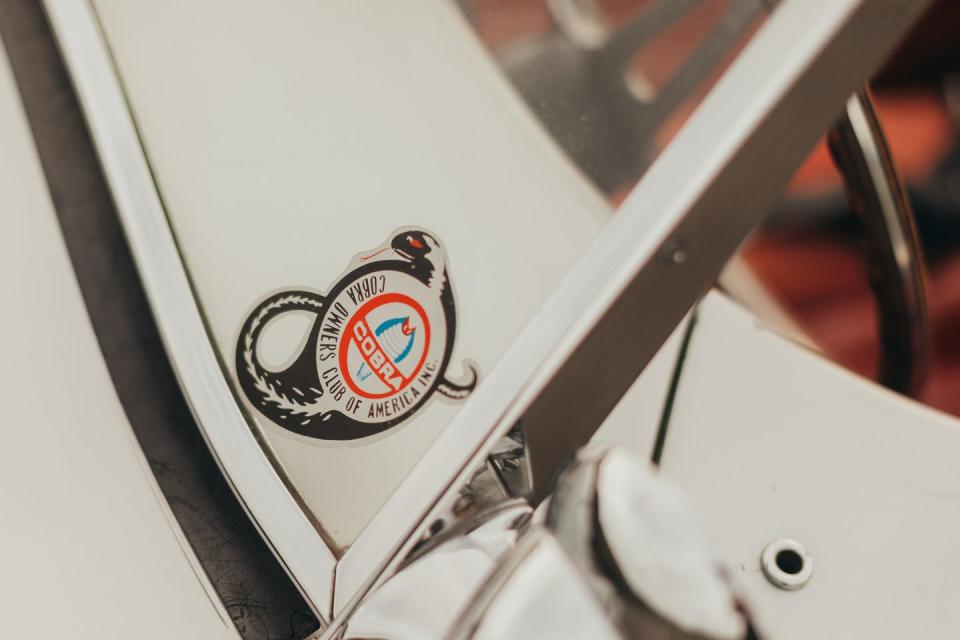
That’s underselling it. Growing up in rural Appalachia, I found Shelby’s name sitting on the same dusty shelf as Jesus Christ and Phillip Fulmer. Dropping behind that wheel for the first time was the kind of thing I wanted my grandfather to be there for, just to see his bloodline fire the ignition on a genuine Cobra. This car shines with use. The red leather seats are cracked and split, the big wooden wheel darkened by the hands of only two owners. There are dings and scratches, the red carpet faded. And still it is a machine that is somewhere past valuable. The 289 snapped awake at the starter’s first revolution, loud and eager. The sound seemed to come from somewhere else. This delicate British sports car, all aluminum, leather, and wood, put the snarl of every Mustang I’ve ever loved at my ear. Good God. No wonder these things took over the world.
It settled into a loping idle. I notched the four-speed into first and let out the clutch. I went easy into Turn 1, minding cold engine and tires, surprised by body roll. The car lists before the suspension settles and the steering weights up. Early versions came with the same Rube Goldberg steering geometry as the Ace, but later iterations, including this one, benefit from a rack and pinion, a gift of Shelby engineer Phil Remington’s constant fettling. Bless the man. Three turns in and I was adding speed, that free-spinning 289 urging me on. The Cobra is all suspension travel and lean, but it has no interest in taking your head off. It’s a puppy, a Miata with torque. You know it’s warm by the smell of oil and rubber wafting through the cockpit.
1965 SHELBY 289 COBRA
ENGINE:
4.7-liter V-8
OUTPUT:
271 hp/312 lb-ft
TRANSMISSION:
four-speed manual
WEIGHT:
2020 lb
PRICE WHEN NEW:
$5995
The track tumbled into a wave of chicanes, the line through them as clear as if it’d been painted there. I plunged into throttle for the first time, bathing in the light of that bright small-block. The engine spun up its octaves in a shout, the sound of it bouncing off the trees and back to me, pressing the car forward, past the point of giving a single f*** about it being a million-dollar car. “Come on,” it said. “Keep going.”
Somehow, nothing about it was intimidating. The torque curve must be a 2x4, just a wide plateau that lets you get away with a wrong gear here or there. Everything about it is far removed from modern sports cars with their too-serious suspensions and galactic engine outputs. It turns out the formula is pretty simple: 271 hp in a 2020-pound roadster. It’s more than enough. You sit nearly on top of the rear axle, and the car wires its intentions to your backside before getting out of sorts, letting you manage the microslides with throttle and that massive wheel.
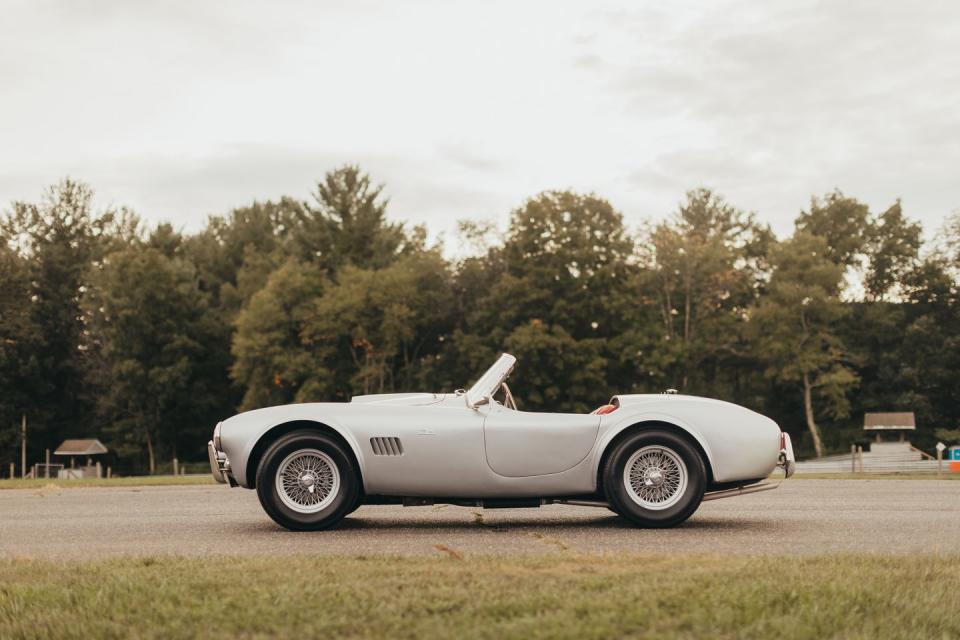
No wonder the first owner poured more than 110,000 miles on it, tracing California’s spine with these leaping fenders pointing his way. Barrey Robles was 19 when he bought the car new, intending to take it racing. It was originally white with a red interior, but Robles wanted it silver, and he wanted fender flares and a hood scoop. By the time the work was done, the SCCA had changed the rules, and the Cobra was no longer competitive. Robles did what anyone would do in that position: bought a GT350R to race and daily-drove the Cobra for two decades. Our kind of people.
The car had been parked for years when Comer purchased it. He shipped it to his Wisconsin shop, made certain it was roadworthy, then sent the Cobra back to California to take Robles for one more road trip in the car that carried him through adulthood. The two are still friends, chatting on the phone and visiting each other’s families.
These days, Comer’s not shy about sharing the car or putting miles under it. He regularly points it at 1000-mile rallies, and with more than 135,000 miles on the odometer, it may be the highest-mileage Cobra on the planet. But for him, it’s about more than bragging rights or investment.
“I told my seven-year-old daughter: ‘Don’t sell this car. You can sell everything else, but you and your brother need to keep this car. Trust me on this. I don’t care what happens in the world.’ Having something analog that you can fix and work on is important, and this car never makes a guy feel stupid,” he said. “You can get a Clymer service manual for a Mustang and fix anything on it.”
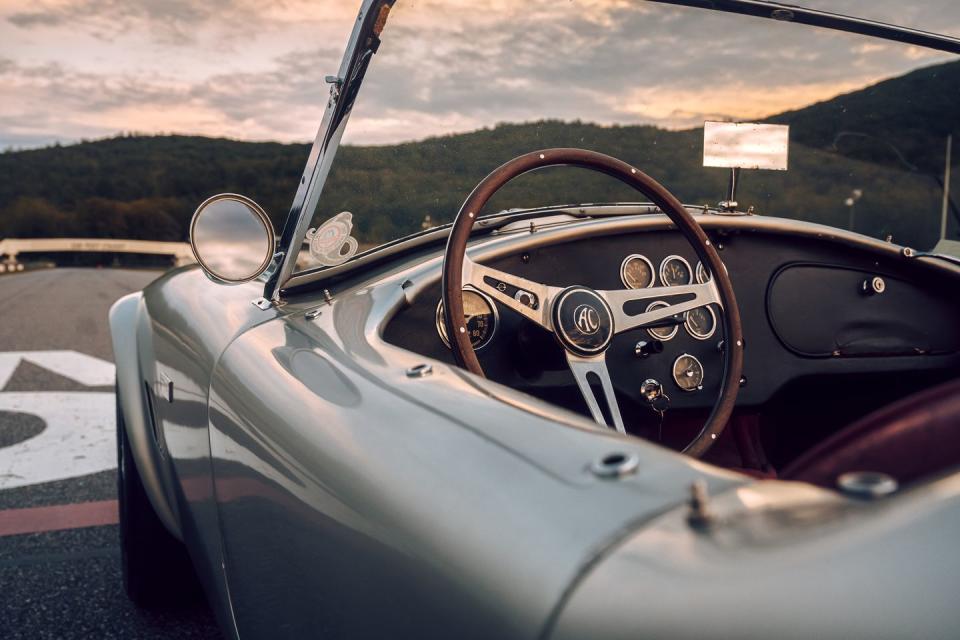
I got six laps. That’s more than anyone else, and I’m grateful but also heartbroken. In part because, in 1965, Robles paid $4500 for this car. Around $37,000 today. But there is no modern analog. You cannot go buy a lithe, connected V-8 roadster with no regard for anything other than being the best driving car around for Accord money. I wanted more. I wanted my time behind the wheel to stretch out, the moment frozen, perfect. It’s a rare feeling. One that only gets stirred up in the morning with my wife asleep beside me or my daughter held tight in my arms. Those instances sustain us through the hurtful, long hours that make up the cruel majority of our days. Isn’t that what a good sports car should strive for? Life at its brightest.
To read about all eight cars in our "Search for the Greatest Sports Car of All Time," and find out which one took the crown, click here.
You Might Also Like

 Yahoo Autos
Yahoo Autos 